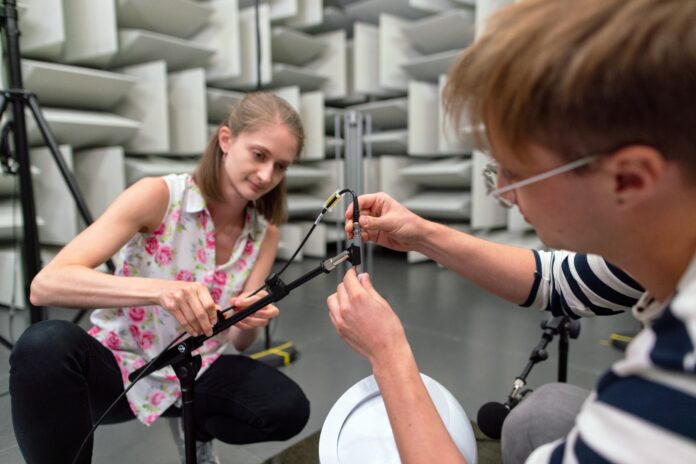Microneedles have emerged as a groundbreaking technology in the field of biomedical engineering and drug delivery. These tiny devices, often ranging from 25 to 1500 micrometers in length, resemble small needles and are designed to penetrate the skin’s outermost layer. The concept of microneedles has gained significant attention and interest due to their potential to revolutionize various applications, including transdermal drug delivery, minimally invasive diagnostics, and biomedical sensing.
Microneedles, as the name suggests, are extremely small needles that are typically fabricated using biocompatible materials such as silicon, metal, or polymers. These materials are chosen based on their suitability for skin penetration and compatibility with the desired application. The microneedles can be solid, hollow, or coated, depending on the specific purpose they are intended to serve.
One of the most promising applications of microneedles is in transdermal drug delivery. Traditionally, drug delivery has relied on oral administration or injections, both of which have their limitations. Microneedles offer an alternative approach that allows for painless and efficient delivery of therapeutic agents through the skin. By creating tiny channels in the outer layer of the skin, microneedles facilitate the transport of drugs directly into the underlying tissues, bypassing the need for needles that penetrate deeper into the body. This method has the potential to improve patient compliance, enhance drug efficacy, and reduce the risk of needlestick injuries.
Moreover, microneedles can be designed to encapsulate or coat drug formulations, ensuring controlled and sustained release of the medication. This feature enables precise dosing and minimizes the need for frequent administration, improving patient convenience and treatment outcomes. Additionally, the use of microneedles in drug delivery opens up new possibilities for the delivery of a wide range of therapeutics, including proteins, peptides, vaccines, and even gene-based therapies. The versatility of microneedles in accommodating various drug types and formulations further contributes to their potential impact on healthcare.
In addition to drug delivery, microneedles hold promise in the field of minimally invasive diagnostics. These tiny devices can be integrated with sensors or biosensors to enable real-time monitoring of biomarkers in the skin. By collecting samples or detecting specific molecules, microneedles can provide valuable insights into a patient’s health status without the need for invasive procedures or blood draws. This non-invasive and continuous monitoring capability opens up new avenues for personalized medicine, remote patient monitoring, and disease management.
The fabrication and design of microneedles have undergone significant advancements to ensure their efficacy, reliability, and safety. Various techniques, such as micromolding, lithography, and laser ablation, are employed to create microneedles with precise dimensions and geometries. The choice of materials and fabrication methods depends on the desired application, the properties of the drug or diagnostic agent, and the desired penetration depth. Researchers are constantly exploring new materials and fabrication techniques to enhance the performance and functionality of microneedles.
Although microneedles hold immense potential, several challenges still need to be addressed for their widespread adoption. Biocompatibility, stability, and scalability are critical factors that need to be considered during the design and manufacturing process. Ensuring painless and reliable insertion of microneedles into the skin, as well as their removal after use, is another area of active research. Moreover, regulatory considerations and cost-effectiveness also play a significant role in the successful translation of microneedle-based technologies into clinical practice.
Microneedles represent a remarkable innovation in biomedical engineering and drug delivery. Their ability to painlessly and efficiently penetrate the skin opens up new possibilities for transdermal drug delivery, minimally invasive diagnostics, and biomedical sensing. The potential to enhance patient compliance, treatment efficacy, and safety make microneedles a promising technology for healthcare applications. The controlled and sustained release of drugs through microneedles offers advantages over traditional administration methods, leading to improved therapeutic outcomes and patient convenience. Furthermore, the integration of sensors and biosensors into microneedles enables real-time monitoring of biomarkers, providing valuable insights into a patient’s health status without the need for invasive procedures.
The development of microneedles has seen significant progress in terms of fabrication techniques and materials. Researchers are continually exploring new materials that are biocompatible, stable, and suitable for efficient skin penetration. Various fabrication methods, such as micromolding, lithography, and laser ablation, are employed to achieve precise dimensions and geometries for microneedles. These advancements aim to enhance the performance, reliability, and safety of microneedle-based technologies.
Despite the immense potential of microneedles, several challenges remain. Biocompatibility is a crucial consideration to ensure the safety and tolerability of microneedles in the skin. Stability of the microneedles, especially when storing or transporting drug formulations, is essential to maintain the integrity and efficacy of the encapsulated therapeutics. Scalability is another important aspect, as the manufacturing process should be capable of producing microneedles in large quantities for widespread use.
Another key area of research is the development of painless insertion and removal techniques for microneedles. Efforts are focused on refining the design and mechanics of microneedles to minimize discomfort during application and ensure easy removal after use. The goal is to provide a seamless and user-friendly experience for both patients and healthcare providers.
Regulatory considerations and cost-effectiveness also pose challenges in the adoption of microneedle-based technologies. Meeting regulatory requirements and obtaining necessary approvals are critical steps in translating these innovations into clinical practice. Additionally, cost considerations play a significant role in determining the viability and accessibility of microneedle-based devices for widespread use in healthcare settings.
In conclusion, microneedles represent a groundbreaking technology with immense potential in various healthcare applications. Their ability to penetrate the skin painlessly and efficiently opens up new possibilities for drug delivery, diagnostics, and sensing. With ongoing research and development efforts, addressing challenges related to biocompatibility, stability, scalability, insertion/removal techniques, regulatory compliance, and cost-effectiveness will pave the way for the widespread adoption of microneedles, ultimately improving patient care and outcomes in the field of medicine.


















